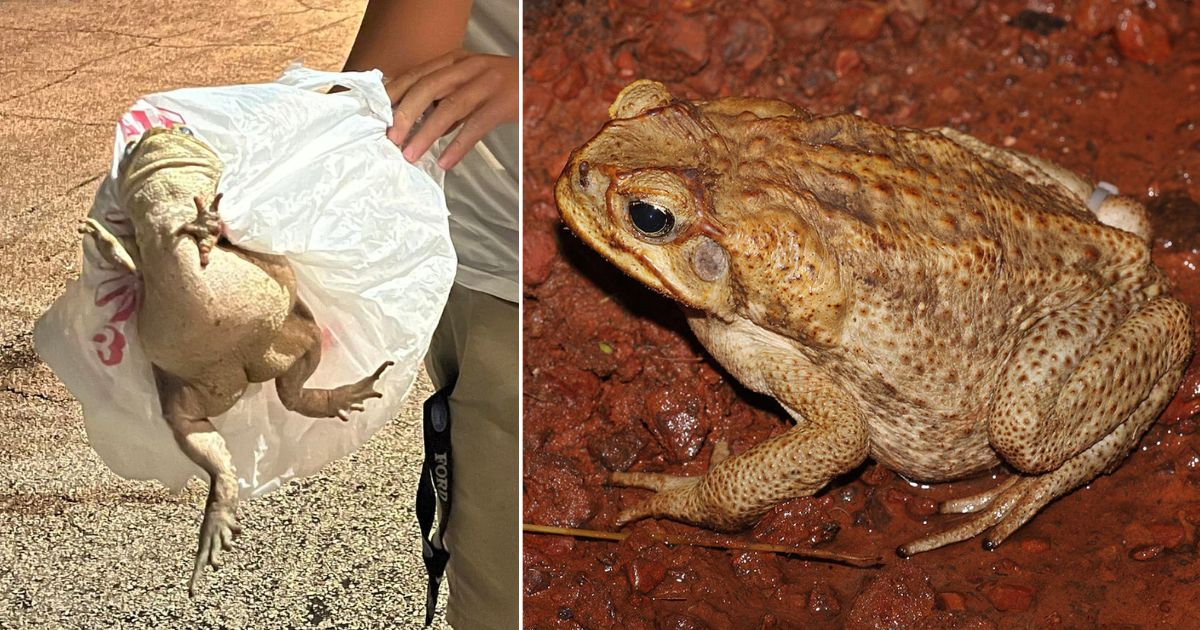Meteorologist Matt Devitt issued a warning last Wednesday about the increasing sightings of cane toads in southwest Florida, including a massive one-foot-long specimen captured in Marco Island, in the southwestern part of the state. These invasive toads pose a significant threat to pets, especially during the rainy season when their numbers peak and they are most active at night, he noted on Facebook.
He explained that the cane toad releases a toxin that can be deadly for pets: "If your pet encounters and bites a cane toad, the impact will be almost immediate," he warned. The effects of the toxin can severely sicken a dog and, without proper treatment, can cause death in as little as 15 minutes, he emphasized.
Devitt recommended specific and swift actions for pet owners: "If your dog bites one, wash the toad's toxins from the mouth quickly using a hose for ten minutes, being careful not to direct water into its throat. Wipe the gums and tongue with a dish towel to remove toxins. Take your pet to the veterinarian!"
In addition to the risk to pets, the meteorologist highlighted the negative ecological impact of the cane toad, an invasive species with no place in the local ecosystem. He advised that if handling these toads is necessary, protective latex gloves should always be used, but also stressed the importance of correctly identifying the cane toad before proceeding with its removal.
This call for caution aims to protect both pets and the environment from the harmful effects of this invasive species.
Recent Invasive Species Sightings
In June, another invasive species was captured in Florida. A video shared on social media showed an alligator devouring a devil fish, an animal that can damage ecosystems. The United States Geological Survey (USGS) has alerted that this invasive species is more common in Florida than in any other state in the country. In the past, this species has been responsible for the deaths of manatees in the state of Florida, according to WBBH.
Also recently, a python hunter in Florida captured a 17-foot and one-inch - over five meters - python in the Everglades near Fort Lauderdale, and the dramatic moment of the capture was caught on camera. Matthew Kogo, a trapper with the Florida Fish and Wildlife Conservation Commission (FWC), found the snake in the Francis S. Taylor Wildlife Management Area.
Invasive pythons can reach up to eight meters in length and wreak havoc on the native wildlife of the southern Florida ecosystem, even devouring alligators. They have reduced some mammal populations by up to 90%, according to FWC. They have no natural predators in the Everglades.
Addressing the Cane Toad Threat in Florida
Given the increasing concern about cane toads in Florida, here are some frequently asked questions and their answers to help you understand the situation better.
What should I do if my pet encounters a cane toad?
If your pet encounters and bites a cane toad, immediately wash the toxins from its mouth using a hose for ten minutes, being careful not to direct water into its throat. Wipe the gums and tongue with a dish towel to remove toxins and take your pet to the veterinarian as quickly as possible.
Why are cane toads dangerous to pets?
Cane toads release a toxin that can be deadly to pets. The toxin can cause severe illness and even death within minutes if not treated promptly.
How can I identify a cane toad?
Cane toads are large, robust toads with warty skin. They can grow up to one foot in length and are typically brown or greyish in color. It is crucial to correctly identify them before attempting to handle or remove them.
